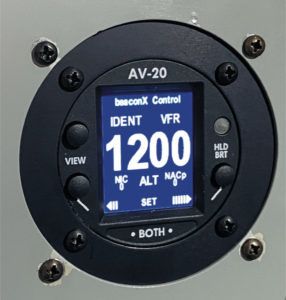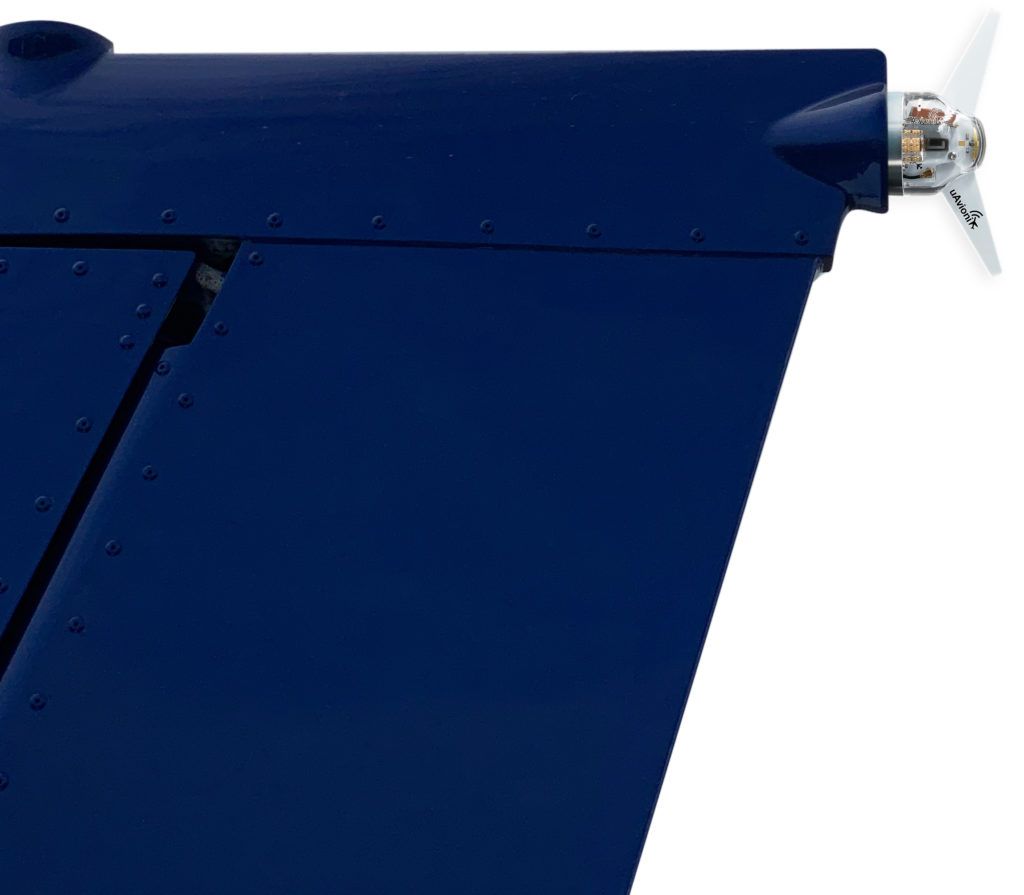Continuing its success of aggressively bringing smartly designed ADS-B products to the competitive market, uAvionix now has bragging rights to the first tail-mounted miniature ADS-B Out transponder for GA aircraft, with the tailBeaconX.
A follow-on to the successful skyBeacon and tailBeacon position and strobe light/ADS-B Out systems, the tailBeaconX is the company’s answer to an Aireon-compatible, space-based ADS-B infrastructure proposed for Canada and other countries, which is a different tech than the ground-based network that’s in place in the U.S. Many of the most popular ADS-B Out transponders currently in service won’t even work in a space-based system because they lack Diversity circuitry and dual L-Band antennas.
The fully compatible tail-mounted transponder from uAvionix, which is pending TSO and STC approval for certified aircraft (expected in Q2 of 2020), is limited to experimentals for now and starts at $2499. The device is a 1090ES Mode S/ADS-B Out transponder and is completely remote controlled by the company’s AV-20E and AV-30E EFIS displays, sold separately. Unlike the previous tailBeacon/skyBeacon products, which use the existing lighting wiring for power and ground (which the tailBeaconX also does), the tailBeaconX will require installers to run a set of wires from the tail to the AV-20 or AV-30 control head on the instrument panel.
The tailBeaconX product packs a hefty punch in a small frame. In addition to its transponder and ADS-B duties, it’s an LED rear position light, and has built-in SBAS GPS position sourcing, dual L-Band antennas with Diversity and a pressure altitude encoder for Mode C. It weighs 90 grams and draws minuscule amount of current.

tailBeaconX experimental bundle packages that include the 2-inch AV-20E EFIS/control head are priced at $3194 and the 3-inch AV-30E at $3794. Certified systems will have an approximate $600 additional price delta. In many cases, a tailBeaconX ADS-B transponder/position light installation can yield an easier and less expensive installation than competitors’ panel and remote-mounted transponders. Visit www.uavionix.com.




































Some forward thinking design work in this device. Makes you wonder how long it will be before the FAA decides Diversity is better than their land-based ADS-B system.
Shhhush, John … I just paid to put my ground based system in … don’t give ’em any ideas. 🙂
Sorry Larry. Don’t shoot the messenger. I’m all in with the ground based system too, so I don’t look forward to plunking down more money if they decide to “upgrade”. A space-based system sounds great, but it is not without its own problems. One good solar flare and the whole system goes down without warning.
Between 2017-18 Nav Canada and Iridium Corporation repurposed existing telecom satellites to create a fully space-based ADS-B system at very low cost. The following quote from a 2017 paper has proved prescient:
“The United States has been a world leader in air navigation for a century. The ground/satellite-based ADS-B technology we developed in the 1990s has become a world standard. But the world is not standing still. A second generation, totally space-based, ADS-B system is being launched as a joint venture by Nav Canada and Iridium Corporation. The system will become operational next year when the full constellation of satellites is in orbit. Recently, the FAA NextGen team validated the performance of those Iridium satellites already in orbit and it left no doubt that the future of air navigation will be space-based ADS-B, with the ground-based ADS-B infrastructure serving as a backup.”
Not so fast…
The near future promisses a sky filled with MILLIONS of drones. ADS-B, terrestrial or space-based, is NOT up to handling that volume.
What? Me worry? ADS what? What are you guys talking about? My retirement ride flies lowly and slowly over grassland and flint hills only, tailwheel streaming bluestem. Nary a drone or other airplane out there.
Niiiice.